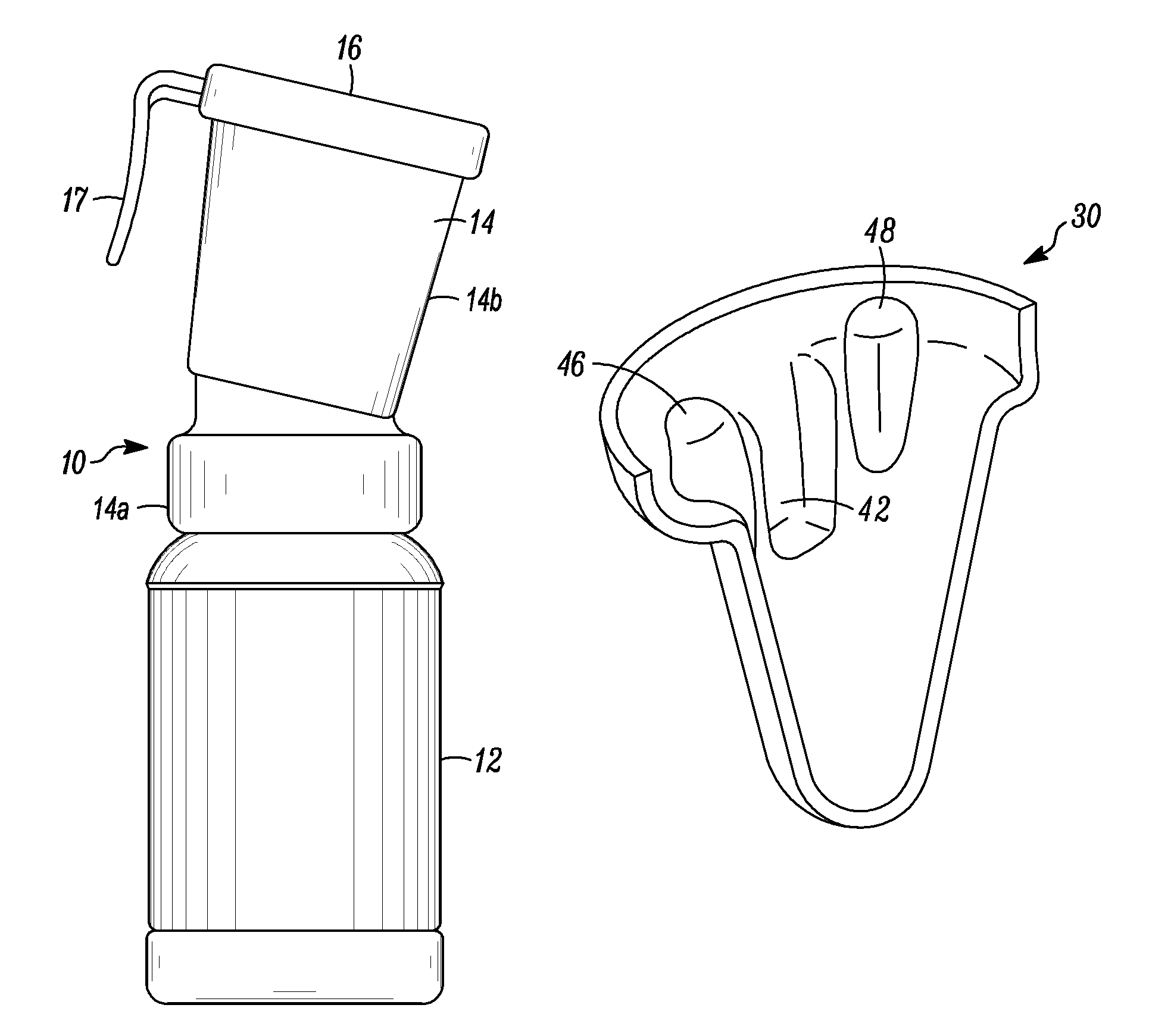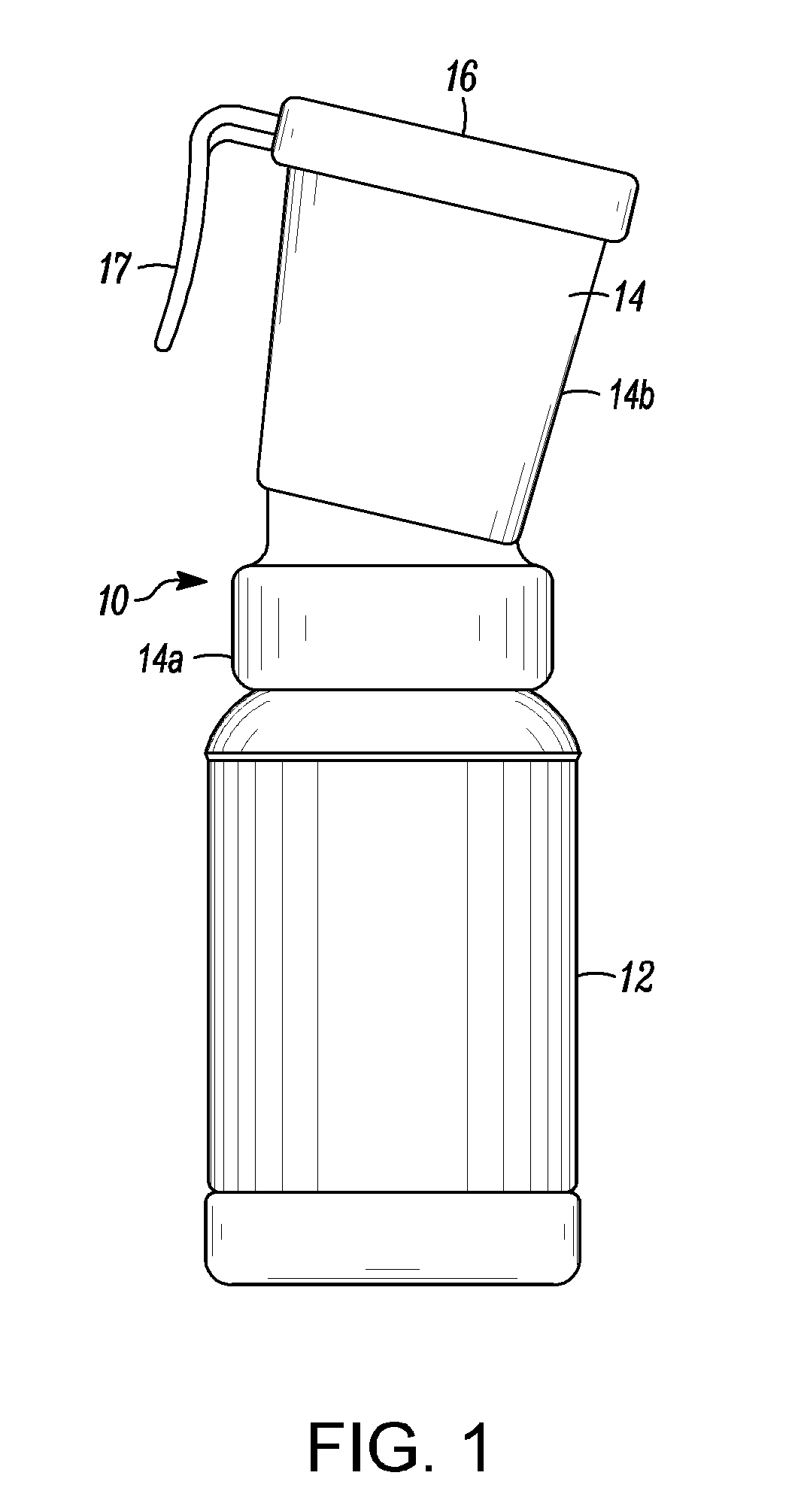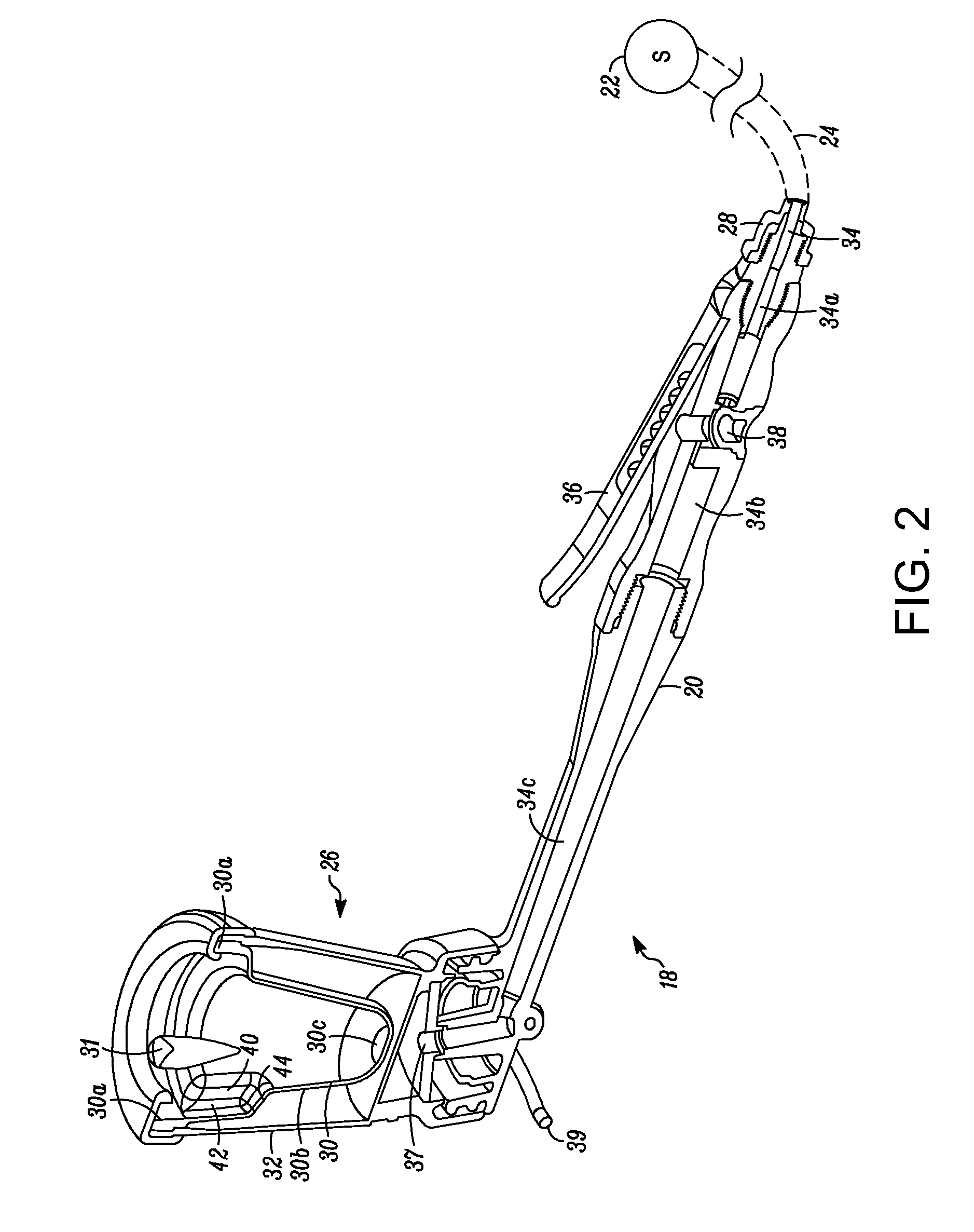Teat application device with cup portion having limited circumferential extension
a technology of application device and cup portion, which is applied in the field of application device for treating the teats of milk producing animals, can solve the problems of affecting the quality of teats, so as to achieve convenient removal, prevent spillage, and easy cleaning
- Summary
- Abstract
- Description
- Claims
- Application Information
AI Technical Summary
Benefits of technology
Problems solved by technology
Method used
Image
Examples
Embodiment Construction
[0039]FIG. 1 shows an application device 10 that comprises a container in the form of an open top flexible squeeze bottle 12, and a plastics dip cup 14. The dip cup 14 has a generally cylindrical base portion 14a which threadably engages with the open end of the bottle 12 and an upper, generally frustoconical body portion 14b which is inclined at a small angle with respect to the base portion 14a. The dip cup 14 also has an open first end 16 capable of receiving an animal teat, and a hook 17 which may be used when the device is in use to hang the application device up to allow the operator to have both hands free to perform another task.
[0040]The alternative application device 18 shown in FIG. 2 includes a manually operable wand-like handle 20, one end of which is supplied with a source 22 of liquid via a flexible hose 24. The flexible hose 24 is connected to the handle 20 using a hose connector 28. The other end of the handle 20 is connected to a dip cup 26, which is similar to the...
PUM
 Login to View More
Login to View More Abstract
Description
Claims
Application Information
 Login to View More
Login to View More - R&D
- Intellectual Property
- Life Sciences
- Materials
- Tech Scout
- Unparalleled Data Quality
- Higher Quality Content
- 60% Fewer Hallucinations
Browse by: Latest US Patents, China's latest patents, Technical Efficacy Thesaurus, Application Domain, Technology Topic, Popular Technical Reports.
© 2025 PatSnap. All rights reserved.Legal|Privacy policy|Modern Slavery Act Transparency Statement|Sitemap|About US| Contact US: help@patsnap.com



